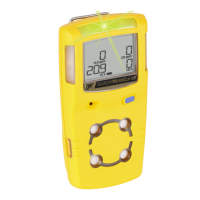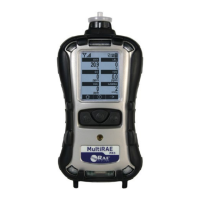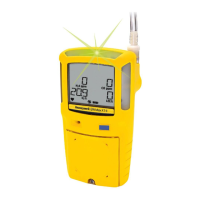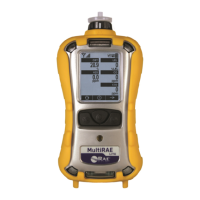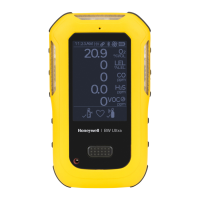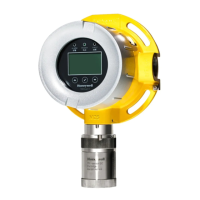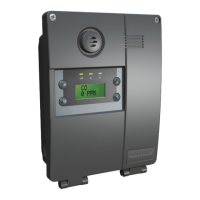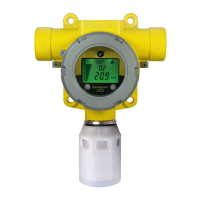4-7
4.3 Sample and Exhaust Tubing Calculations
The following tables show the flow rate, tubing
length, transport time, and maximum pressure and
vacuum at the inlet and exhaust points. Tubing
lengths vary among gases. See Appendix B for
recommended lengths.
Table 4-1. Inlet sample specications
Inlet Sample Specifications:
Maximum
Tubing Length, m (ft)
30 (100) 20 (66) 10 (33) 0
Transport Time (sec), ID 1/8”
1
28 19 10 1
Transport Time (sec), ID 3/16”
63 43 23 1
Sample Point Vacuum
(Negative pressure)
-25.4 cm H
2
O (-10 in H
2
O) Maximum
Flow rate, cc/min.
500 (Flow is constant)
2
Tubing OD, mm (in)
6.35 (0.25)
Tubing ID, mm (in)
3.18 (0.125)
1
Honeywell Analytics recommends thick-wall tubing (1/8” ID)
for best speed of response. Due to its lower surface area, thick-
wall tubing may require less conditioning than thin-wall tubing.
2
The ow rate is electronically maintained at approximately
500 cc/min and may vary within acceptable tolerances.
Table 4-2. Outlet sample specications
Outlet Sample Specifications:
Maximum
Tubing Length, m (ft)
30 (100)
Back Pressure at Exhaust Point
(Excluding tubing)
20.3 cm H
2
O (8 in H
2
O) Maximum
Tubing OD, mm (in)
6.35 (0.25)
Tubing ID, mm (in)
4.76 (0.188)
Note
Honeywell Analytics recommends the use of
Teon FEP (Fluorinated Ethylene Polymer)
tubing to assure proper sample transport.
The properties of Teon FEP make it the
best choice for transporting sample toxic
gases to instruments when compared with the
properties of other similar tubing materials.
If the pressure/vacuum on the inlet/exhaust lines
does not meet the recommended values in Tables
4-1 and 4-2, the following chart describes potential
fault conditions that may be brought on by the
external influences thus resulting in an F81 Flow
Fault.
External Flow Fluctuation Fault 81 Explanation
1
Low
(0-150 cc/min)
None No Midas
®
will auto-adjust
2
Low
(0-150 cc/min)
Yes
(up to 100 cc/
min flow swings)
Likely
Midas
®
changes the flow
gradually. If external flow
changes are large and rapid,
the final reading will be
different from what Midas
®
expected.
Midas
®
will issue
Fault 81.
3
Medium
(~200-450 cc/
min)
Yes and No Yes
Minimum flow rate for the
pump is ~300 cc/min. With
this external flow, the auto-
adjust cannot work because
the pump cannot produce
a flow at this low level. The
problem is worse if there are
flow fluctuations.
4
High
(> 600 cc/min)
Yes and No Yes
Midas
®
cannot reduce the
external flow. Midas
®
will
issue Fault 81 due to high
flow
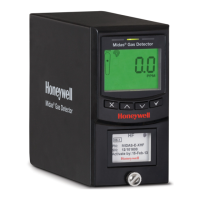
